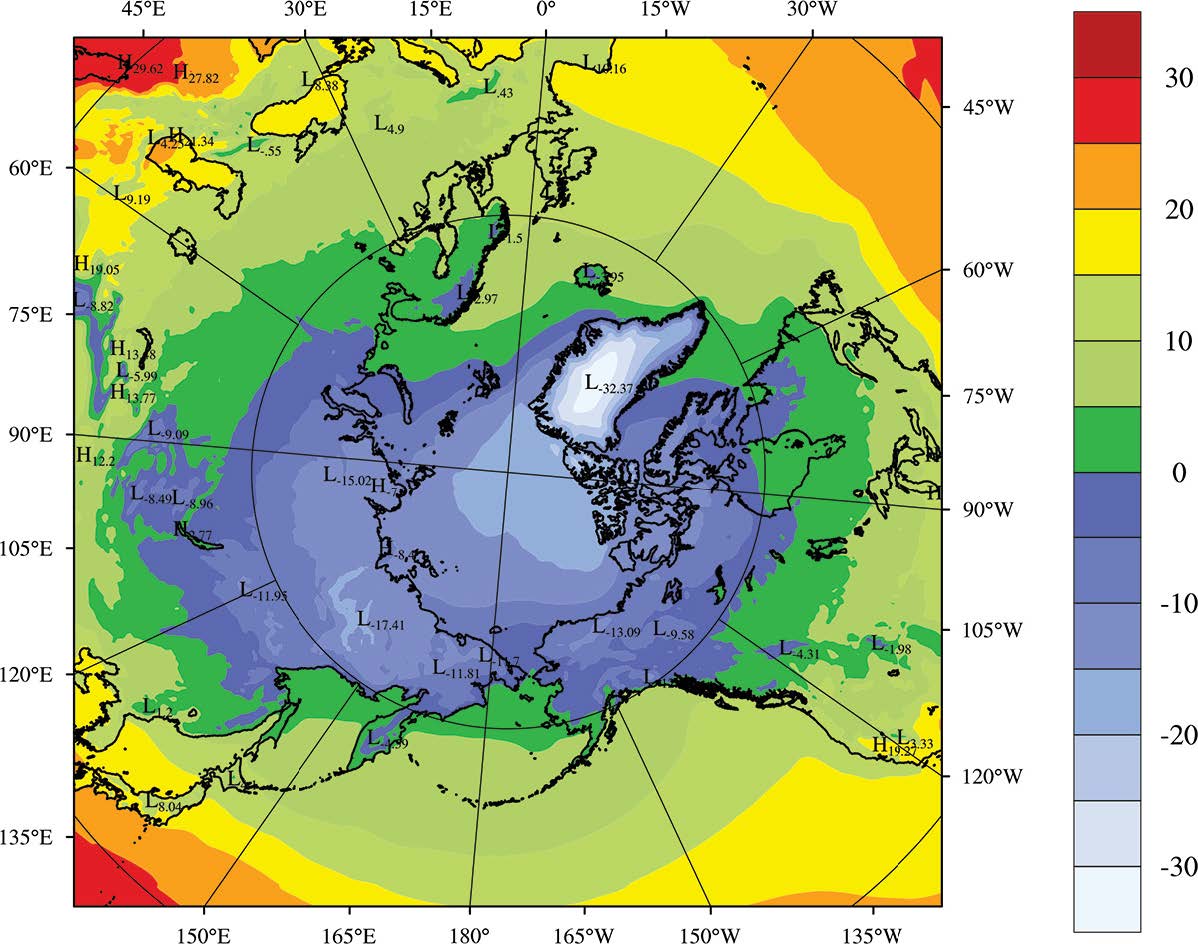(top) Average near-surface air temperature distribution from ASR-Interim in degrees Celcius (colors) for fall (Sept.-Nov., 2000-2010 average).
The Arctic is in the midst of rapidly escalating change with pronounced increases in surface air temperature over subarctic land areas, as well as over the Arctic Ocean. Sea ice cover in the Arctic has declined substantially in summer, rendering both the Northwest Passage around Arctic Canada and the Northeast Passage above Russia ice-free in the summer months, probably for the first time in centuries.
Even more disconcerting, the warming of the Arctic region has occurred at a much faster rate than scientists and traditional computer models have been predicting.
“In 2012, the Arctic sea ice smashed the low-extent record of 2007 by about 20 percent,” noted David Bromwich, Ph.D., a senior research scientist for the Byrd Polar Research Center at The Ohio State University and professor of atmospheric sciences in the geography department. “And, over a few days in July this summer, almost the entire ice sheet of Greenland experienced surface melt, a very anomalous event.”
To help better gauge the changes taking place there, Bromwich and his research team have been awarded National Science Foundation funding to develop the Arctic System Reanalysis (ASR). Bromwich is feeding 11 years of historical atmosphere/sea ice/land surface observations into the Polar Weather Research and Forecasting model (Polar WRF). Polar WRF was created by the Polar Meteorology Group of the Byrd Polar Research Center at Ohio State and is a modification of the Weather Research and Forecasting model widely used by researchers and most federal agencies.
For ASR, the complex Polar WRF system analyzes 17 surface variables, 71 forecast surface variables, 13 forecast upper air variables and 3 soil variables. The goal of ASR is to provide researchers with high-resolution information against which researchers can validate climate prediction tools.
“The ASR will permit reconstructions of the Arctic system’s state, thereby serving as a state-of-the-art synthesis tool for assessing Arctic climate variability and monitoring Arctic change,” Bromwich noted. “Appropriately, Arctic enhancements developed for this project by Ohio State are being funneled through the National Center for Atmospheric Research for release to the scientific community.”
To synthesize the vast troves of data, Bromwich has leveraged the computational and storage resources of the Ohio Supercomputer Center. A low-resolution interim version of the ASR, covering 2000-2010, is currently available to the scientific community.
--
Project lead: David Bromwich, The Ohio State University
Research title: Arctic System Reanalysis
Funding source: National Science Foundation
Web site: http://bit.ly/OSC-RR-Bromwich
